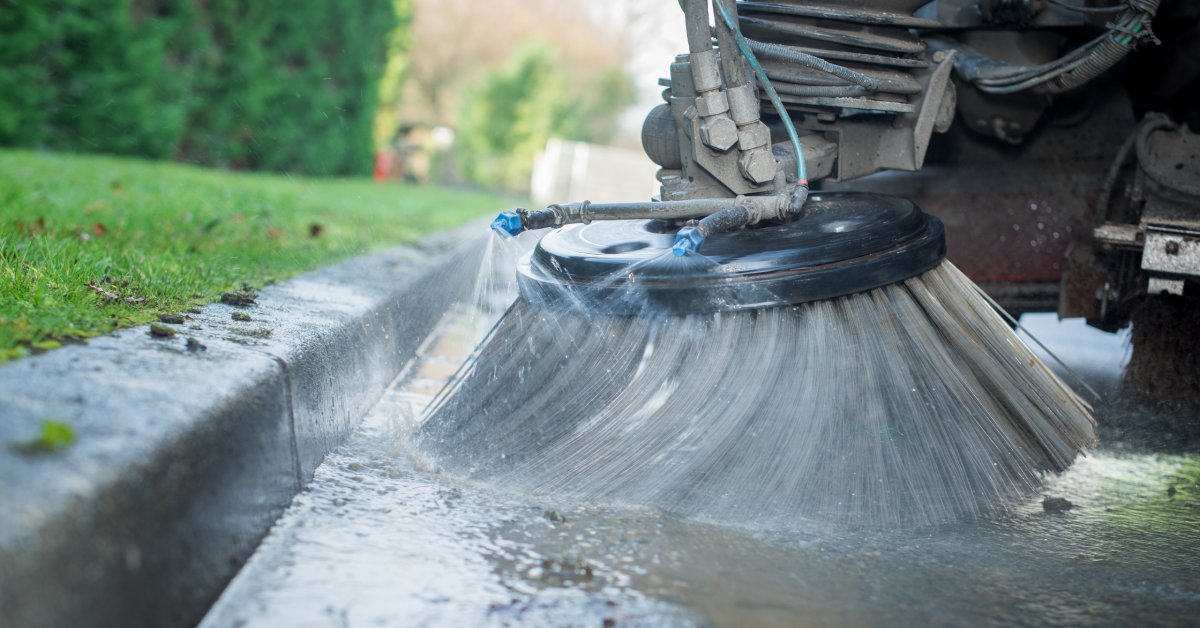Despite its durability, asphalt is not immune to damage. Without proper care, it can deteriorate over time, leading to unnecessary repairs and safety concerns. From natural elements to human activities, numerous factors contribute to wear and tear. Here, we’ll walk you through the top 10 causes of asphalt deterioration and how to avoid them.
1. Poor Initial Construction
Poorly constructed asphalt may lack proper materials, compaction, or drainage systems. This foundational weakness translates into premature cracking, potholes, and other surface issues.
When inferior materials or shortcuts during installation occur, the structural integrity of the asphalt significantly decreases. Proper grading and compaction create even surfaces that resist wear, while quality materials ensure long-term strength.
To avoid issues, ensure a qualified professional installs the asphalt, and follow up on their reputation for using high-grade materials.
2. Utility Work
Although crucial for modern life, utility work often leaves its mark on asphalt. When trenches are dug to install or repair water lines, gas pipes, or electrical wiring, the cuts in the asphalt can weaken its structure. Improper refills or rushed patchwork can exacerbate the damage, leading to recurring cracks or depressions.
Utility work causes asphalt deterioration when the asphalt does not regain its original integrity. Partnering with construction services that repair utility cuts with close attention to compaction and layering can minimize problems down the road.
3. Growing Trees
Trees bring shade, beauty, and environmental benefits to any landscape. However, their roots can create significant challenges for asphalt surfaces. As tree roots grow and expand underground, they push upward, putting pressure on the pavement above. This can cause the asphalt to lift, crack, and become uneven, creating safety hazards and increasing maintenance costs.
To prevent these issues, avoid planting trees too close to asphalt driveways, pathways, or parking lots. Research tree species before planting, and opt for varieties with less aggressive root systems, such as Japanese maples or dogwoods. Installing root barriers can also help redirect roots away from the asphalt, minimizing potential damage.
Regularly inspect trees and surrounding pavement for early signs of root interference. Look for raised or cracked areas, and address the problem promptly to avoid bigger repairs later. Proper planning and maintenance allow you to enjoy the benefits of trees without compromising your asphalt surfaces.
4. The Weight of Heavy Vehicles

Heavy vehicles, like delivery trucks or construction equipment, place concentrated pressure on asphalt. Over time, these weighty machines can cause ruts, depressions, and eventually cracks.
If you see heavy vehicle traffic on your pavement, consider reinforcing the structure during construction. Thickening the asphalt’s layers and bolstering its foundation can support a wider range of uses without compromising its longevity.
5. Water and Moisture
Water seeps into small cracks and wears away at the base layers. Over time, this undermines the strength of the surface, leading to larger-scale issues such as depressions and potholes.
To avoid this, focus on proper drainage design during installation. Routine inspections and the timely repair of small cracks or depressions can also prevent water from infiltrating beneath the surface.
6. UV Radiation
Prolonged exposure to UV radiation weakens asphalt. Over time, the sun’s rays oxidize the binder, causing the surface to turn brittle and lose flexibility. This ultimately leads to cracking and erosion.
Coating your asphalt with UV-resistant sealants helps mitigate this damage. Regular sealcoating not only keeps asphalt elastic and durable but also refreshes its appearance, protecting it from fading and other common signs of sun-induced wear.
7. Freezing Weather
Winter may transform the landscape into a scenic wonderland, but it’s a serious problem for asphalt. Freezing temperatures cause water trapped in asphalt cracks to expand and freeze, which increases internal pressure and worsens the damage. This freeze-thaw cycle continues throughout the cold months, leading to larger cracks and noticeable potholes.
Prepare for winter with sealcoating and by ensuring proper drainage to protect your asphalt from the harsh effects of freezing weather. Regular maintenance before the start of the season is your best defense against winter damage.
8. Exposure to Chemicals
Parking lot spills or driveway drips might seem minor, but exposure to chemicals like oil, gasoline, and deicers can wreak havoc on asphalt. Over time, these substances break down the binder, causing the pavement to weaken and deteriorate.
Chemical spills also result in discolored, softened patches that turn into potholes when left untreated.
Rinsing or addressing spills immediately prevents chemical exposure from becoming a long-term issue. Add sealants that resist oil and chemical damage to reinforce your asphalt against frequent exposure to these substances.
9. Lack of Sealcoating
A protective layer is essential to shield asphalt from moisture, UV rays, and chemicals, among other hazards. Without it, asphalt becomes more prone to natural wear, making it less durable against traffic and changing weather conditions.
Beyond protection, this layer improves the surface’s appearance, keeping it intact and presentable for years. Neglecting sealcoating is a top cause of asphalt deterioration, but avoiding it is simple. Just add this task to your scheduled maintenance.
10. Insufficient Cleaning

Keeping asphalt clean goes beyond improving its appearance. Dirt, debris, and grime don’t just make the surface look unkempt—they trap moisture that can seep into the asphalt, contributing to cracks, potholes, and premature deterioration.
Blocked drainage from debris buildup can cause water to pool, further weakening the surface over time. Additionally, dirt and grime reduce the effectiveness of sealants, leaving sidewalks, parking lots, and driveways exposed to the elements and more prone to wear.
Regular cleaning removes these harmful contaminants, protecting the asphalt from damage and ensuring proper drainage. Following a consistent cleaning schedule and performing periodic inspections not only extends the life of your asphalt but also maintains its safety and functionality. By staying proactive, you can avoid costly repairs and preserve the surface for years to come.
Protect Your Pavement With Simple Solutions
Each of these issues contributes to the gradual decline of asphalt, but being proactive can protect your pavement and extend its life. From installation to ongoing maintenance, small decisions make a big difference.
One of the easiest ways to maintain your surfaces is through professional asphalt sweeping. Dirt, debris, and contaminants can accelerate wear, but regular sweeping not only keeps your asphalt clean but also helps you spot potential issues early.
At CPM Sweeping, our milling cleanup services go the extra mile. Reach out today to see how asphalt sweeping can preserve your investment, enhance safety, and improve the longevity of your pavement.

